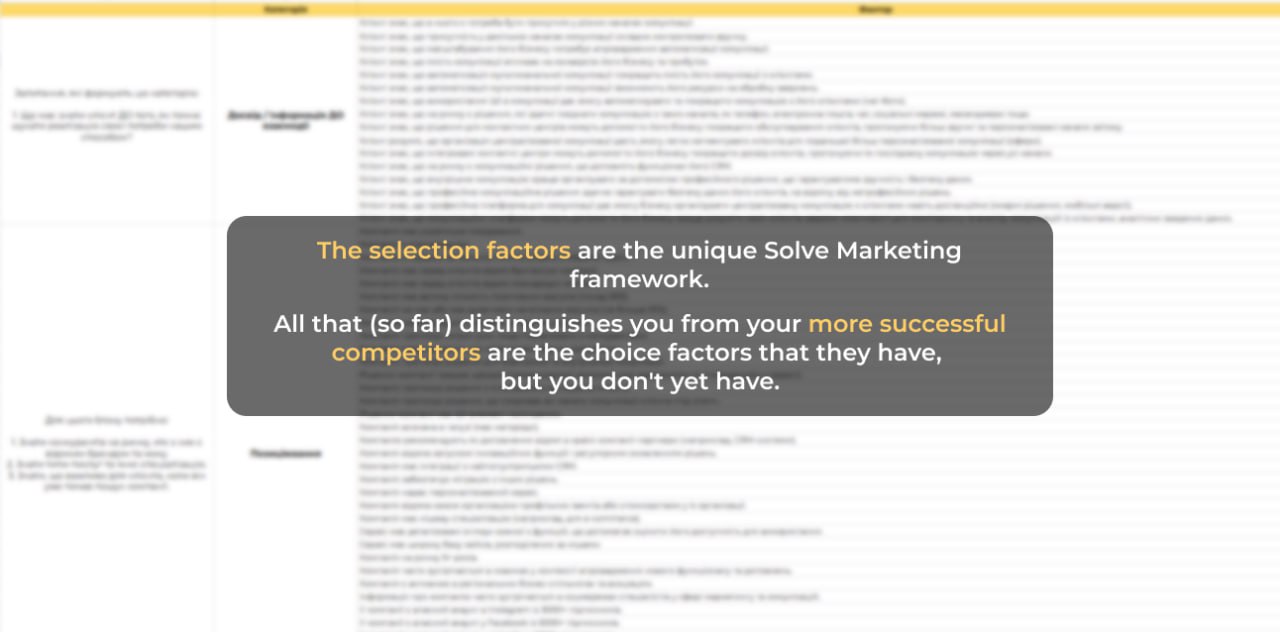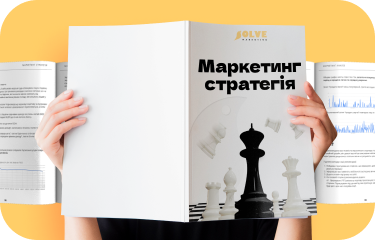A typical situation for B2B: a long transaction cycle and no system of predictive new customer generation other than word of mouth. Does it sound familiar?
Greenex ECO contacted us at a point when the brand had dozens of completed projects, expertise, and technology, but only those who had already had experience of cooperation knew it on the market. For most others, Greenex ECO remained in the shadows.
In this case study, we will tell you how we:
- developed a comprehensive marketing strategy for a technical product from scratch;
- collected information and analysed the market, competitors and choice factors;
- turned “air purification technologies” into a value proposition that is easy to understand, choose and recommend.
| How long did it take to develop the strategy? | 150 hours, 6 working weeks |
| What is the composition of the marketing strategy development team? | Head of Marketing Team, Head of PM Team, Head of Content Team, operational marketer, content marketer, head of PPC, Facebook PPC, editor. |
| How was the result of the work used? | Independent implementation by specialists on the client’s side. |
Introduction
Greenex ECO is the Ukrainian company that has been operating in the industrial filtration systems market for over 15 years. Their solutions are installed in plants, factories, and enterprises where air becomes not just a resource, but a critical factor in environmental and reputational safety.
The Greenex ECO project is:
- Own production and engineering in Ukraine.
- Work with public and private enterprises.
- High degree of customisation of solutions.
- Entering the market with new products for B2B.
- Ideas that are ahead of the market, but not always packaged in such a way as to become a factor of choice for attracting new customers.
What did we see? A powerful tech brand without systematic marketing. A strong product with great potential. But with minimal recognition and undeveloped lead generation channels.
Objective: to increase the flow of applications through marketing channels, while maintaining the focus on attracting the right category of customers.
Market analysis
At first glance, environmental technologies are about the future.
But for business, they’re also about fines, reputation, and costs.
That’s why we took a deep dive into the industrial air purification market — not to deliver dry figures, but to understand where businesses are currently losing money, reputation, and their chance to scale.
🟢 The market is growing.
And it will continue to grow — driven by EU integration, stricter standards, and increased awareness among businesses of the value of social responsibility.
🔴 But at the same time, the logic of demand is changing.
Equipment alone is no longer enough.
Businesses want turnkey solutions — with guarantees, cost savings, and the ability to showcase this to investors.
For Greenex ECO, this meant one clear thing:
Move beyond the role of a “service provider“ and become a strategic partner to business.
Our mission? To reinforce this position through clear communication, expertise, and smart positioning.
Market facts:
- Global trend
Annual growth of the air purification systems market at 7% — at least through 2030.
Demand is driven not only by environmental concerns but also by production benefits: cost reduction, improved working conditions, and higher ratings among partners. - Ukrainian realities
65% of harmful emissions come from industry.
Most enterprises still operate without automated emission monitoring.
The war has reshaped the pollution map: previously clean regions are becoming new “risk zones”. - Demand barriers
Low awareness of ROI from environmental solutions.
Budget constraints → businesses seek “cheap” options, sacrificing efficiency.
Lack of comprehensive offerings on the market: design, installation, support.
Do you operate in a niche where standards are becoming stricter and risks are becoming more expensive? Sign up for a free consultation and we’ll show you how your business can use these changes to your advantage.
Competitor analysis
The eco-technology market seems oversaturated, but in fact it is underdeveloped. Most companies either dump and sell hardware or talk about an integrated approach without any real service.
We conducted an in-depth analysis of the top competitors and uncovered the key insight: the niche of a “premium but effective“ partner — offering analytics, support, and client-centric service — is wide OPEN.
Most competitors:
- either have in-house production and compete by lowering prices;
- or focus solely on installation, without influencing the technological aspects of the solution;
- or have positioning that lacks clear, distinct advantages and fails to create a unified brand voice.
Most competitors focus either on technical specifications or low pricing — while completely ignoring service, branding, and communication.
Their digital presence is mostly outdated or purely formal, and SMM is barely used.
The market is missing a next-generation player — one with strong positioning, expert-driven marketing, and a trust-first approach to sales.
Your competitors are also competing for customers’ attention, but is it clear why they choose you? Sign up for a free consultation and we’ll show you how to strengthen your brand’s position in the market.
Project analysis
When we got to know Greenex ECO, we didn’t just see a solution manufacturer — we saw a company that represents the face of change in industrial ecology.
But despite its clear advantages, clients didn’t understand what exactly made this company different from the rest.
Usually, the issue lies not in the product, but in the lack of structure, a clear message, and digital consistency.
So we started with the foundation — an audit of every touchpoint that shapes the first impression of the brand.
If you’re in the business of producing and implementing turnkey solutions, it’s worth reviewing the following communication elements:
Website
- Does the site structure support lead generation?
- Is there a clear visual hierarchy of key site elements?
- Are CTAs used, and do they effectively prompt action?
- Is the site content overly complex? Perhaps too technical without explaining benefits?
Social media
- Are Facebook and LinkedIn managed systematically? Is there a clear strategy, consistent posting, and a noticeable tone of voice?
- Are there enough case studies, videos, and expert content that build trust?
Presentations and catalogs
- Are the materials purely technical without marketing logic? Do they communicate values and solutions for the client?
- Are the materials adapted to the target audience, from engineers to CEOs?
Reputation and search results
- Are there mentions of your company in public sources?
- Can PR presence and SERM be tracked?
💡 Insight: your product can be truly high-quality, technological, and meet critical client needs, but if it’s not visible in the market, the client will choose whoever speaks louder, not who works better.
The most common situation for a manufacturer is having everything needed to become a market leader — but the market doesn’t see it because the company treats all the above as routine and uninteresting.
In reality, clients can’t read minds, so they only learn about your internal strengths if you tell them about it.
A complex product deserves a simple and effective presentation. Let’s start with the strategy.
Lead generation analysis
Our first step was to audit the current situation in Google Ads, where we found:
- Campaigns were launched without clear goals, defined segments, or B2B client adaptation.
- The landing page fails to motivate action.
- The main issue is the lack of connection between traffic and the goal. People click but do not submit inquiries. This signals that the page either doesn’t explain well or doesn’t inspire trust.
📉 Problem: the landing page does not inspire trust or address the client’s request. Visitors come but leave. This is typical for complex B2B products without a clear value proposition on the site.
What we recommended:
- Optimize the website: add CTAs, visual case studies, concrete numbers, and structure content by segments.
- Expand the semantic core focusing on specific industries (instead of general terms like “filtration,” use more precise ones such as “air purification for metallurgy,” etc.).
- Test new formats: different headlines, alternative communication styles.
- Add microanalytic: integrate Microsoft Clarity to better understand user behavior on the site.
💡Insight: when a website has traffic but no applications, it is not always a problem of setting up advertising campaigns. The more complex the business niche, the more attention should be paid to creating the necessary prerequisites for sending an application.
Want to check how your engagement system is working? Sign up for a consultation and we’ll show you where the potential is being lost.
Choice factors
In B2B niches, even before meeting in person, customers browse the website, read reviews, evaluate the visuals, compare technical specifications, and read the tone of your communication. Each of these touches is a choice factor that brings you closer or further away from the customer’s decision to cooperate.

Insight: in B2B niches, choice factors should be built into communication in advance: guarantees, service, responsibility, experience, results. It is important not just to have them, but to help the client pay attention to them at the time of evaluation.
Choice factors are needed to:
✅ Build competitive advantages — even in complex or oversaturated markets.
✅ Optimize sales funnels — by influencing the early stages of decision-making.
✅ Systematize communications — not telling everything at once, but emphasizing the aspects of the offer that matter most to the client.
We collect and classify choice factors and provide recommendations on how to implement each of them.
Read more about the framework of choice factors and how they can help your business at this link.
SWOT analysis
A SWOT analysis is a tool that helps businesses soberly assess themselves and their playing field: recognise their strengths, avoid vulnerabilities, see new horizons and identify risks that could destroy everything.

In our work on Greenex ECO, this analysis allowed us to:
- identify key competitive advantages that can be scaled up;
- identify growth areas that should be strengthened in the first place;
- adapt the marketing strategy to market realities and internal resources;
- lay the foundation for future decisions in positioning, promotion and sales.
The market doesn’t wait — it changes every day. And without a systematic strategy, even strong companies lose their position. In our consultation, we’ll show you how to leverage your strengths.
Implementation
We developed a strategy focused on B2B clients in the medium and large business segments:
While most competitors play the dumping game and sooner or later leave the market, market leaders rely on reputation and consistency. The market is always open to those who sell not only hardware but also an understanding of customer needs, a sense of predictability and professionalism.
At the conclusion of each strategy, we conduct a detailed presentation of findings, provide a list of clear actions, and equip you with specific tools to achieve your business goals.
That’s why our strategies are actionable plans for change, grounded in research. We create strategies for companies at various stages of development:
- For startups — to establish positioning, select markets, lay the marketing foundation, and avoid budget waste.
- For scaling businesses — to ensure growth does not disrupt processes but is systematic, manageable, and profitable.
- For those launching new directions or products — to enter the market supported by analytics, trends, and competitive advantage.
- For companies seeking to precisely influence their clients’ choices — we help shape positioning, choice factors, and customer behavior logic at every funnel stage.
🚀 Ready to create a growth system? Sign up for a free consultation — we’ll analyse your situation and show you what a strategy is that works in business, not in theory.




